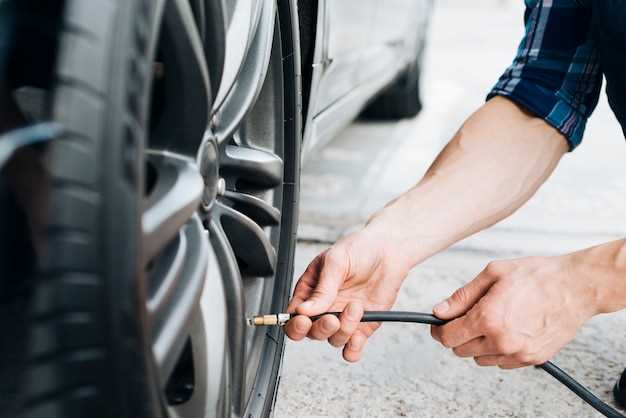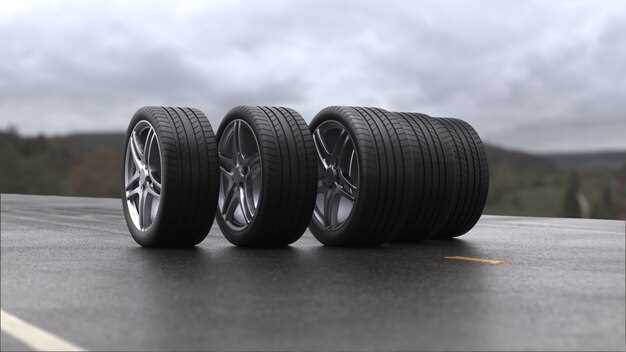

When it comes to driving, the choice of tires can significantly affect safety and performance. One option that has gained popularity in recent years is run-flat tires. These specialized tires are designed to maintain their functionality even after sustaining a puncture, allowing drivers to continue their journey without immediate tire changes. However, while the concept of run-flat technology offers several compelling benefits, it also comes with its set of challenges that potential buyers should consider.
On the positive side, run-flat tires provide the convenience of driving a short distance–typically up to 50 miles–at reduced speeds after a flat. This eliminates the hassle of roadside tire changes and enhances safety by reducing the chances of being stranded in potentially hazardous situations. Additionally, the absence of a traditional spare tire allows for more cargo space and reduces weight in the vehicle. Yet, these advantages must be weighed against some notable disadvantages.
Although run-flat tires offer notable benefits, they also present some drawbacks. Many drivers report a stiffer ride and increased road noise compared to standard tires. Furthermore, these tires can be more expensive to replace and may not be repairable after a puncture. Understanding both the advantages and disadvantages of run-flat tires is essential for making an informed decision that best fits your driving needs and lifestyle.
Understanding the Technology Behind Run-flat Tires

Run-flat tires are engineered to maintain mobility even after a loss of air pressure. This capability is largely due to their unique construction, which includes reinforced sidewalls that support the vehicle’s weight even when deflated. Unlike traditional tires, run-flat designs allow for short-distance driving at reduced speeds, typically up to 50 miles at speeds of 50 mph, enabling drivers to reach a safe location without needing immediate roadside assistance.
The technology behind run-flat tires combines specialized materials and structural enhancements. The sidewalls are thicker and stiffer, providing additional support when air pressure is lost. This modification helps prevent the tire from collapsing entirely, thus maintaining vehicle control during driving. Additionally, many modern cars are now fitted with tire pressure monitoring systems (TPMS) that alert drivers to a loss of pressure, allowing them to react promptly.
Moreover, run-flat tires can enhance the overall driving experience by negating the need for a spare tire, which saves trunk space and reduces vehicle weight. Many drivers appreciate this convenience, especially during long trips where flat tires can lead to significant delays. Despite their advantages, it is important to note that run-flat tires can be more expensive than conventional tires and may offer a stiffer ride due to their construction.
Overall, understanding the technology behind run-flat tires helps consumers make informed decisions based on their driving habits and needs, balancing safety, convenience, and cost considerations in their choice of tires.
Emergency Driving Scenarios Using Run-flat Tires
Run-flat tires are designed to maintain vehicle mobility even after losing air pressure, providing critical advantages during emergency driving situations. For instance, when a tire punctures, a driver can continue to travel safely for a limited distance and speed, typically up to 50 miles at 50 mph. This capability is particularly beneficial in dangerous situations where an immediate stop could compromise safety, such as on busy highways or isolated areas.
In scenarios involving a sudden tire failure, run-flat tires allow drivers to avoid the hassle of roadside tire changes, reducing exposure to roadside hazards. This feature is essential for individuals who frequently drive in remote locations or regions with minimal assistance options.
Additionally, run-flat tires offer peace of mind during long road trips. Drivers can focus on reaching their destination without the constant worry of tire-related issues. Knowing that their vehicle can continue to perform during emergencies allows for a more relaxed driving experience.
However, it’s crucial for drivers using run-flat tires to be aware of their limitations. While they provide enhanced safety and convenience, regular monitoring of tire condition and adherence to manufacturer guidelines is essential to ensure optimal performance in emergencies. Overall, run-flat tires significantly enhance driver confidence and safety in emergency driving scenarios.
Maintenance and Replacement Considerations for Run-flat Tires

Run-flat tires offer significant benefits, particularly in emergency driving situations where a flat tire can compromise safety. However, proper maintenance and timely replacement are crucial to maximizing their efficiency and lifespan. Unlike conventional tires, run-flat designs allow you to continue driving for a limited distance, typically up to 50 miles, even after a puncture. This unique feature demands a distinct approach to maintenance.
Regular visual inspections are vital. Look for bulges, cuts, or any signs of wear on the tire sidewalls. Since these tires can sustain damage while running flat, it’s essential to monitor their condition closely. A flat tire that shows external damage may not be safe to use even if it appears to be holding air. Additionally, maintaining proper tire pressure is crucial, as run-flat tires are designed to perform optimally within specific limits. Regularly check the tire pressure, as under-inflation can lead to premature wear or failure.
Replacement intervals for run-flat tires can differ significantly from traditional tires. Manufacturers typically recommend replacing them every six years, regardless of tread wear. This timeline is due to the structural integrity of the tires potentially degrading over time, even when not in use. Furthermore, after driving on a flat for any distance, it’s advisable to replace the tire immediately, as the internal components could have been compromised.
When replacing run-flat tires, it is essential to select compatible options that match the specifications set by the vehicle manufacturer. Not all tire dealers stock run-flat options, so it may require some research or specialized shops. Using mismatched or inappropriate tires can severely affect the vehicle’s handling and performance.
In summary, while run-flat tires provide convenience and safety during emergency driving situations, they also require diligent maintenance and timely replacement. Adhering to recommended practices will ensure these tires continue to perform effectively, keeping drivers safe on the road.







